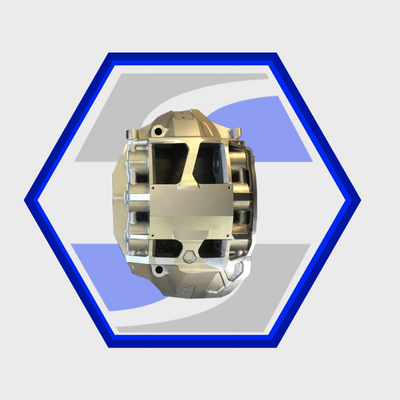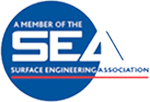5 Types of Nickel Plating
.png)

.png)
It is often confusing how one element can have several different plating methods, often sharing a similar name but intended for different purposes. That is certainly the case for Nickel which has a number of distinctly different processes. Nickel Plating is often specified to further enhance a component’s corrosion resistance properties, so what are the different processes and their intended applications?
Electro-plated Nickel
In the electro-plating process, parts are placed into a vat containing an electrolytic solution. As an electric current is run into the bath it promotes the build-up of the Nickel Sulfate material onto the component.Nickel Plating provides a low cost, smooth and ductile coating that is often used to seal off a component from its environment and provide corrosion resistance properties. It is also used as a base for other processes, most noticeably in the Chrome Plating seen in car bumpers. This is not to say that Electro-plated Nickel can’t be used as a standalone process and through the addition of brighteners, a very high lustre can be achieved with Nickel Plating making it suitable for decorative applications. Nickel Plating will provide a good level of wear resistance and will be resistant to scratches and mild wear.
Sulfamate Nickel
This is also an electro-plating process, but utilises Nickel Sulfamate as opposed to Nickel Sulfate which is used in Nickel Plating. The difference between these two is the deposit created is much purer (99%) has a dense structure and despite its high tensile strength is one of the most machinable coatings. Sulfamate Nickel offers an excellent level of corrosion resistance and can also operate at high temperatures (up to 1400 degrees Celsius) Sulfamate Nickel is a functional coating and is dull in appearance, most popular for the repair of worn parts.
Electroless Nickel
As its name suggests rather than being plated through use of an electric current, in Electroless Plating an autocataclytic reaction takes place. Nickel Ions are reduced using Sodium Hypophosphate which allows the Nickel to be deposited without use of an electric current as the Nickel acts as the catalyst for the plating reaction. The main advantage with this process is that a uniform thickness will be applied over the entirety of a component, forming an even coating no matter the shape. By changing the Phosphorus content you can adapt the process to suit your application. The three varieties are:
Low Phosphorus: Which has the highest levels of wear resistance and is best suited to tackling corrosions from Alkali Chemicals.
Medium Phosphorus: Which offers a good level of Wear Resistance and Corrosion Resistance against chemicals which are Acidic in nature.
High Phosphorus: Which is specified for its high levels of Corrosion Resistance, most noticeably against Acidic Chemicals, but High Phosphorus will offer protection against the widest range of chemicals.
Although often a drawing will only specify Nickel, the size, application and geometry of your component will determine which process is best suited. Silchrome Plating offer Nickel Plating, Sulfamate Nickel Plating, Medium and High Phosphorus Electroless Nickel. We carry out all of our processes in house in our modern facility in Leeds, West Yorkshire and are fully ISO 9001 and 14001 accredited. Send through your enquiry today to see how we can help.




